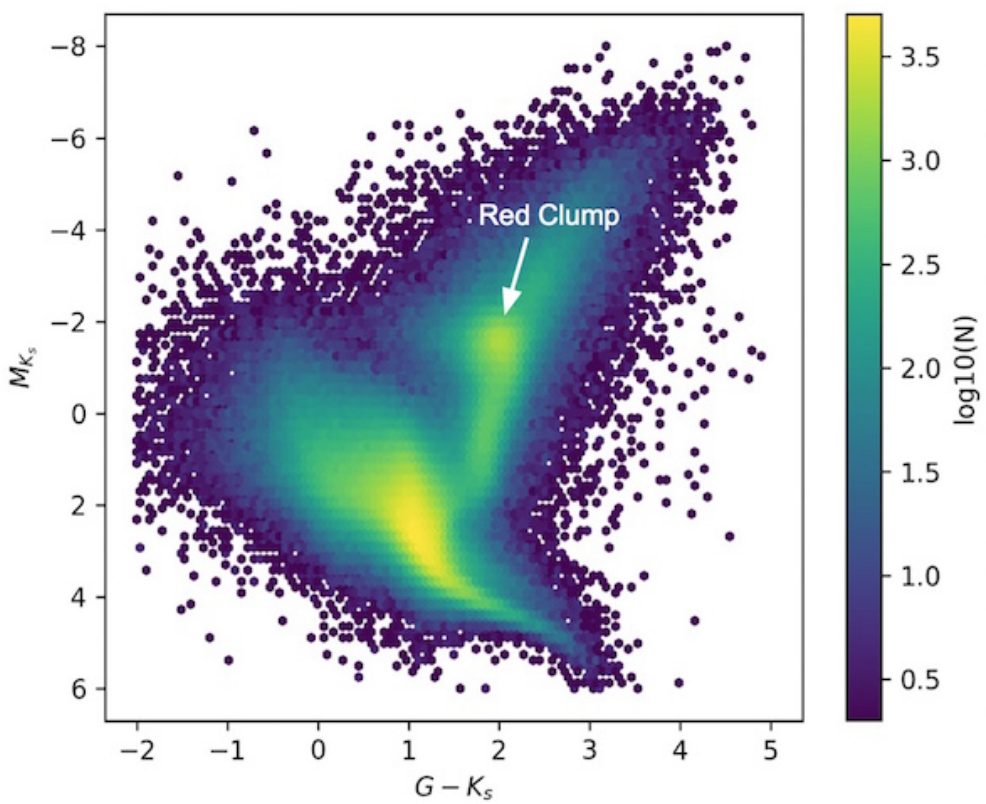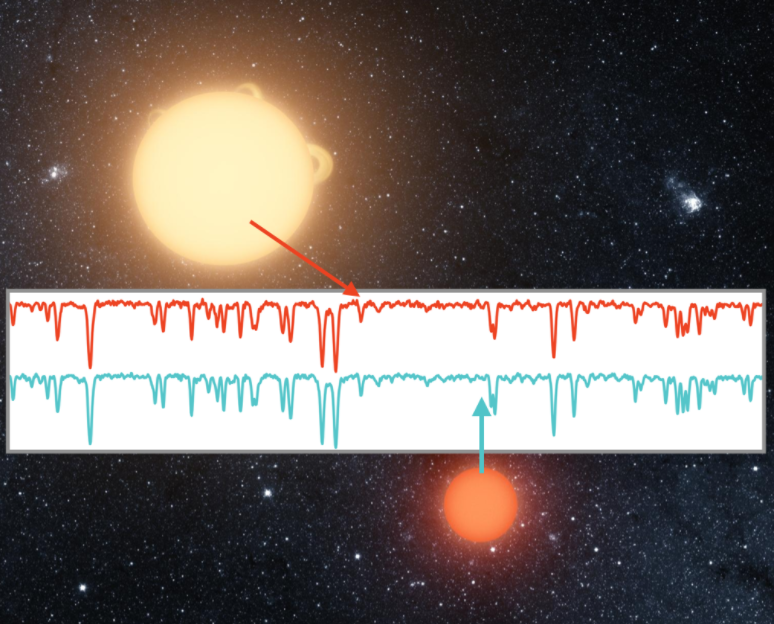Research Interests and Group
Galactic and Stellar Archaeology
Research Interests/Goals:
I have many research interests related to Galactic and stellar archaeology, chemical composition of stars, stellar evolution, stellar spectroscopy, experimental astrophysics, exoplanet host star characterization, big data sets, and machine learning. Below I highlight some recent work in some of these fields. If you have any overlapping interests I’d love to hear from you!--What physical processes are important for galaxy formation?
--What is the role of accretion (i.e. Galactic cannibalism) in galaxy formation?
--What is the structure of our Galaxy, the Milky Way, and how did it come to be?
Despite centuries of hard work, these are all still open and intriguing questions in modern astrophysics and form the basis for the field of Galactic Archaeology! The overarching goal of my research group is to develop a better understanding of galaxy formation in general by using the Milky Way, and its stars, as a laboratory. As a Galactic archaeologist, I use fossil stars to piece together the nature and structure of the Milky Way. We draw on data from the Gaia spacecraft, whose mission is to produce the most precise 3-D map of the Galaxy, and the chemical compositions for more than 105-6 stars using large spectroscopic surveys. I am an active member of the SDSS-IV APOGEE, Gaia-ESO, RAVE, and 4MOST surveys.
Most recently, I have been working with the Hayden Planetarium and the American Museum of Natural History (AMNH) to design and build the first chemical maps of our Galaxy that can be used to not only inspire the public about the chemical fingerprint of the stars across the Milky Way but also for astronomers to better understand its structure and chemical evolution. An example of one of these chemical maps can be found below. It shows an artist impression of the Galaxy that is overlaid with real data (taken from the APOGEE and GALAH surveys). Each point in this video is a star and it is color-coded by the amount of Magnesium (Mg) relative to Iron (Fe) there is in the atmosphere of the star. Blue colors mean there is not a great deal of Mg compared to Fe while red/orange colors mean there is quite a lot of Mg compared to Fe in the star. One can beautifully see with this data that as you go vertically outward through the Galactic disk the typical star's chemical composition changes. Maps like this can be used to study the structure and chemical evolution of the Milky Way.
My research group is actively developing these maps with state-of-the-art data and hope to build a virtual reality version of these maps to bring to school around the state of Texas and beyond.
Much of my group's recent work has been focused on a particular type of evolved star called a red clump star. These red clump stars, unlike the Sun, are burning helium in the cores not hydrogen! They are called red clump stars because they clump in a very obvious way in the color-magnitude diagram (Fig. 1)

We built a hierarchical bayesian model in Hawkins et al. 2017 and show that these core helium burning red clump stars are incredibly useful because they all shine at roughly the same brightness (i.e. they are fantastic standard candles). Another way to think of these stars is that their apparent brightness here on Earth only really depends on the star's distance unlike for most other types of stars. That paper has implication for not just Galactic astronomy but also for the distance ladder. We showed that clump stars can be used to measure distances to about 8% precision, which will be much better than Gaia for distant stars in the halo and bulge. Astrobites did a nice write up on our work. However, theres a problem! How the heck do you find core helium burning stars from the less evolved (shell) hydrogen burning stars???

I addressed this in Hawkins et al. 2018a (also see Masseron & Hawkins 2017 ) where we showed, for the first time, that while one cannot 'see' if a star is burning helium at its core directly other than through asteroseismology, there are indirect signatures that can be found in a spectrum. Fig. 2 shows an example of a near infrared spectrum of a core helium burning red clump star.
Maddie Lucey , my PhD student, then went even farther. In Lucey, Ting, Ramachandra, Hawkins 2020, Maddie built on my previous work and showed that she could just use the gross colors of stars and a Mixture Density Neural Network to pick out red clump stars. She was able to build one of the largest catalog of 2.6 *million* clump stars, which have distance estimates more precise than anything currently on the market. This work enabled us to produce one of the largest most precise 3-D maps of the Galaxy (see video below).
I have used the chemical fingerprint of stars to learn not only things about the structure of our Galaxy (see Hawkins et al. 2015, Das, Hawkins, Jofre 2020, ...) but also to address other interesting questions
In the last year or two, I have been most excited about the concept of chemical tagging. This idea stars that one can determine the birth location of a star given its chemical fingerprint alone. This is very similar to the idea of 23andMe but for the stars using the chemical fingerprint of a star as its 'DNA'. Whether chemical tagging works or not hinges on 2 underlying assumptions: (1) stars born together must be chemically alike and (2) stars born in different parts of the Galaxy must be different from each other. One of the key open questions of Galactic Archaeology is can chemical tagging really work? If it can it will be a powerful tool to piece together how the Milky Way assembled. In light of this my group has been very active in trying to understand whether these underlying assumptions are true in nature. To do this my team began by measuring whether or not wide binary stars (i.e. stellar twins born together), are chemically alike or not. If these twin wide binary stars are alike then all is good with chemical tagging and if not.... well we have a problem. In Hawkins et al. 2020a , we did exactly this.

I found that twin stars are typically (80% of the time or so) chemically alike, encouraging for chemical tagging. There was a nice press release about our work, check out more info there.
I also have used chemical tagging to begin to solve the debate about where the fastest stars (also known as hypervelocity stars) in the Galaxy have originated (see Hawkins et al. 2018b).
Recent Publications from the Group:
Check out the recent publicaitons from our research group hereJoining the Research Group:
Please visit our research group page to learn more about our current group in Galactic and Stellar Archaeology. With new (positional, chemical, and orbital) data now available for now more than 1.6 BILLION stars and the upcoming data (SDSS-V, WAVE, 4MOST, Gaia DR3) this the *perfect* time to join this area of astronomy!!!If you are interested in joining the group feel free to stop by the Physics Mathematics Astronomy (PMA) building room 16.228 or email me at keithhawkins [at] utexas.edu to discuss potential projects.